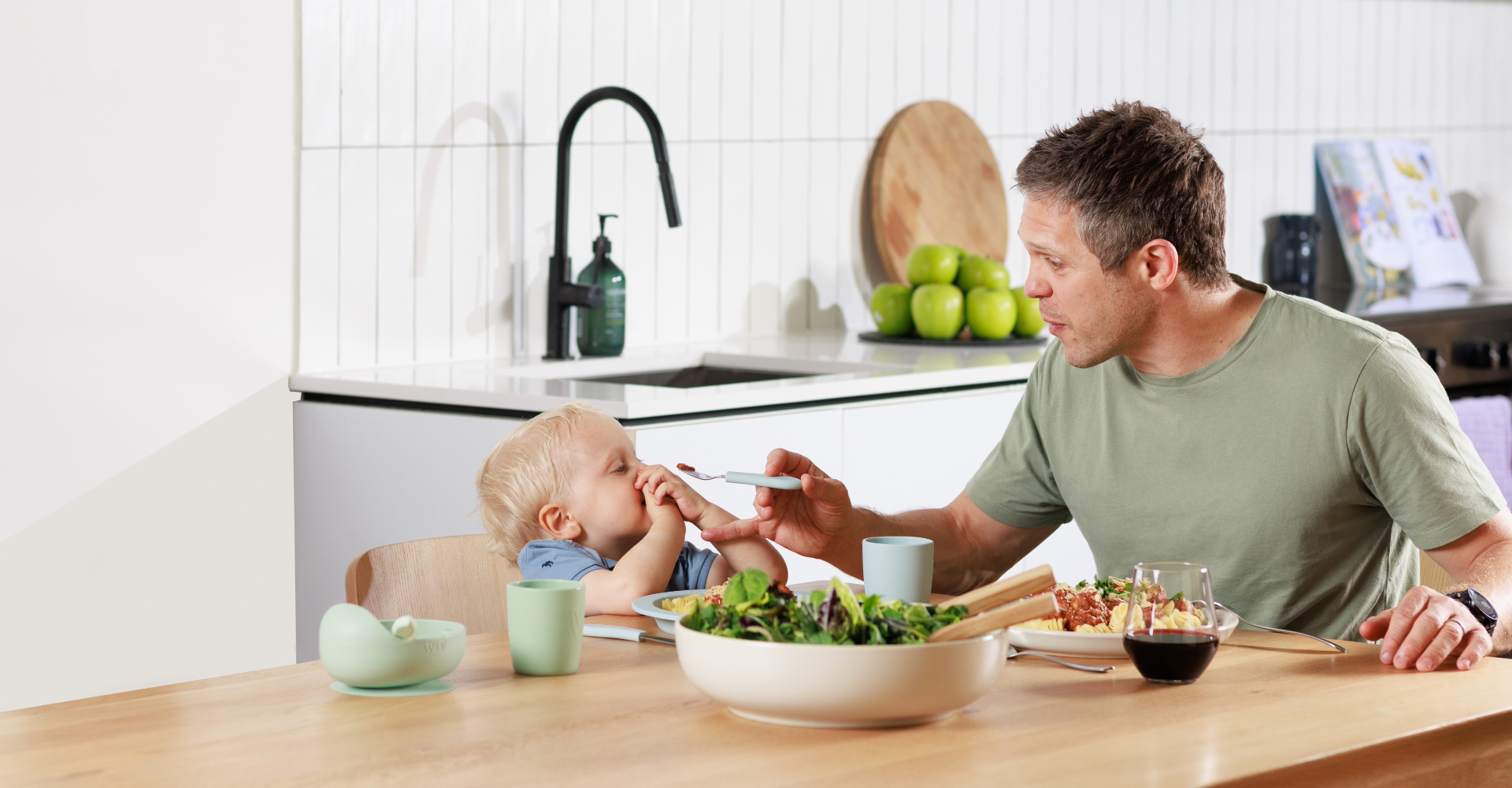
It's practically a rite of passage for little ones to be choosy about the foods they eat – you know, the ones that don't pass the taste, shape, color, or texture test. And let's not forget their ever-changing food mood – loving something today but giving it the cold shoulder tomorrow (just to keep us on our toes!), or boldly boycotting anything new.
This is a common and usually very normal developmental stage which generally starts in the toddler years. Becoming a food critic and saying ‘no’ is all part of their growing independence. But we also know just how frustrating it can be when you’re in this less-than-fun phase. There’s the annoyance that you spent precious time preparing food that is refused point blank, the concern they are missing out on important nutrients they need to grow and play, and the downright frustration that THIS IS GREAT FOOD WHY DON’T YOU JUST EAT IT?!?!
Sound familiar?
If so, the first thing you need to do is remember that you are already doing a great job simply by continuing to provide great, nutritious foods to your little ones. And secondly, you need to read this blog. While there is no way to get a toddler to instantly snap out of this phase, there are things you can do to help your little darling move through this phase as swiftly as possible.
Six strategies to help manage fussy eating in children
Offer new foods alongside accepted ones
Tip: Rather than outright asking your little one to try a new food, try pointing out what you observe or like about it. Over time, this might just peak their curiosity enough to make them want to try it all by themselves.
Keep offering, and offering, and offering
Research tells us it can take 10-15 (or more) exposures to a new food for a child to decide to eat it. So, if you offer them broccoli and they don't eat it (and by 'don't eat it', we are including: refusing to look at it / hurling it from their plate / screaming 'I DON'T WANT THIS', etc.) don't lose heart. By not making a fuss, clearing away the discarded food and continuing to calmly offer it again at future meals, you will send the message that this is a part of your meal, refusing it doesn't spark a reaction, and over time - as they become more familiar with it - they may just decide to touch it, smell it and eventually.... taste it.
Remember the ‘division of responsibility’
The division of responsibility is a concept that supports parents to approach mealtimes in a structured and relaxed manner. The concept explains that it is the parent's responsibility to take care of the what, when and where of mealtimes, and the child's responsibility to decide whether to eat or not, and how much.
Avoid wheeling and dealing
However tempting it is, try to avoid engaging in the 'just one more bit of X and you can have X' negotiations. Sure this can work in the short term, but longer term this creates a hierachy of foods that generally isn't helpful for anyone. Instead, try commenting on what you’re eating and how much you’re enjoying it and they may eventually follow suit.
Channel the Tortoise, not the Hare
You’re playing the long game here. Don’t expect your child's eating behaviours or preferences to change overnight, or even in a week or two. It may take many weeks or months to see a change. But by maintaining a consistent approach and following some of the ideas in this blog, you may just ‘win’ the fussy eating race. It sounds cliche, but try to recognise the little wins along the way so you can see your progress. Small changes like picking up that piece of broccoli (even if it doesn’t make it to their mouth), or not complaining at the small piece of meat on their plate (even if they don’t actually touch it) are all indications that what you are doing is working.
Every child’s food journey is different
Remember, every little one will have their own food journey. Some may have a ‘fussy’ phase at 12 months, and others may cruise through this phase but bring out the food claws (not literally) at 3 or 4.
It’s also important to remember that a child's appetite can vary day to day and week to week, dependent on many factors including their growth and development stage, activity levels and illness, etc. So, it is normal for children to eat loads one week and not much the next. So long as your child is healthy, growing and meeting their developmental milestones it is very likely that they are doing just fine.
And at the end of the day, well… sometimes it’s just the luck of the draw. Some children will be fantastic eaters, and others will be naturally less open to new foods. So if the whole food thing feels harder for your family than others, hang in there. You’re not alone.
Our Nurturing Little Foodies blog contains more tips on how to support little one's to develop a positive relationship with food and help prevent fussy eating.
* The science of helping your child love vegetables - CSIRO
Of course, if you are concerned about your childs' food intake (or any other aspect of their health, growth & development) we recommend seeking individual advice. Book an appointment with your GP, or find an Accredited Practicing Dietitian for tailored, one-on-one support.



Comments (0)
Back to Fussy Eating